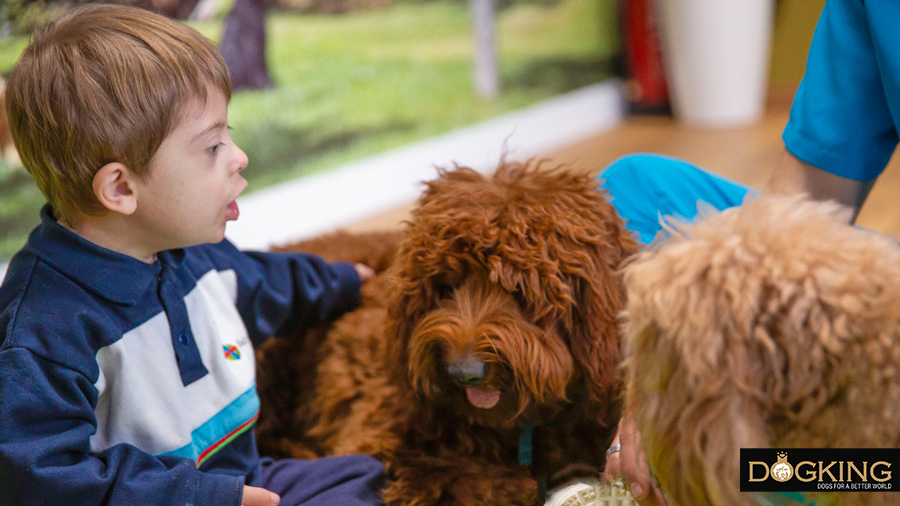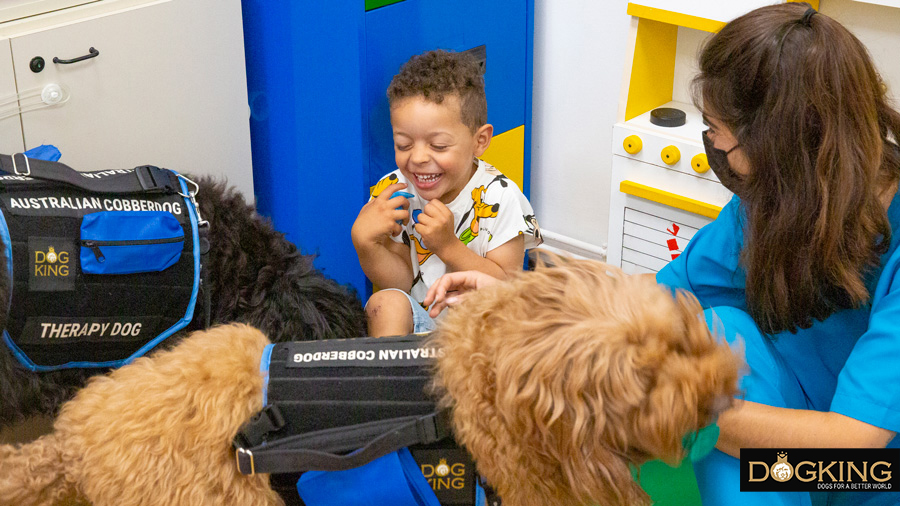Perché gli Australian Cobberdog sono ipoallergenici
La razza per eccellenza che non perde pelo e non produce forfora

LA RAZZA TERAPIA PIONIERA NEL MONDO DELLE ALLERGIE
Tempo di lettura approssimativo : 7 minuti
Circa il 10% della popolazione mondiale è allergica ai cani. Allo stesso tempo, il 14% dei casi di abbandono è dovuto a problemi di allergia. Noi di DOGKING crediamo che ognuno abbia il diritto di godere dell'amore di un cane, così come ogni cane merita di sapere cosa vuol dire avere una casa. Da qui il nostro impegno nel far conoscere gli Australian Cobberdog, una razza ipoallergenica che è entrata in contatto anche con persone il cui sistema immunitario è più sensibile nei confronti dei cani. Ma come può essere possibile?

Indice del contenuto
Allergia al cane: a cosa è dovuta?
Il pensiero comune è che l'allergia ai cani è causata dal pelo, poiché la persona allergica ha sviluppato un'ipersensibilità ad una proteina presente nel pelo, o presente nelle abrasioni sulla pelle del cane, che sono prodotte dalle ghiandole sebacee e dalla saliva. Queste particelle si impregnano ovunque passi il nostro cane, rimanendo nell'aria, negli oggetti o anche sulla pelle o sui vestiti delle persone. Quindi, anche se un cane non si trova nel nostro stesso posto, potremmo avere sintomi di allergia se il cane era già presente in precedenza. Questo effetto è aggravato quando il cane si lecca, poiché la quantità di allergene sarà maggiore nel suo mantello. Inoltre, se si tratta di un cane che perde il pelo o che cade frequentemente, qualcuno che è sensibilizzato avrà maggiori probabilità di soffrire di una reazione allergica. Non solo perché i peli che cadono hanno la proteina potenzialmente allergica, ma perché la perdita del pelo darà origine a squame di pelle che contengono quella stessa sostanza.
L'Australian Cobberdog e il suo potere ipoallergenico
Il motivo principale è che il mantello di questi cani non fanno la muta né perdono pelo e (a meno che non vi sia un insolito problema dermatologico che specifichi diversamente) non hanno nemmeno forfora. Ciò garantisce che la proteina che nella maggior parte dei cani sarebbe impregnata nel pelo e nelle squame cutanee non si diffonde nel caso dell'Australian Cobberdog e, quindi, non provoca sintomi allergici. Allo stesso tempo, la percentuale di persone allergiche alla saliva di questi cani è ancora molto bassa. E, poiché non tutte le persone sono uguali, non tutti rispondono allo stesso modo a determinati fattori e, di conseguenza, non esiste un cane che sia universalmente ipoallergenico. Ciò che è chiaro è che gli Australian Cobberdogs hanno aiutato molte persone, famiglie e pazienti a godersi la compagnia di un cane. Impresa che fino ad allora credevano impossibile a causa della loro condizione allergica.
La razza come garanzia ipoallergenica
Lo standard dell'Australian Cobberdog si basa su due pilastri: temperamento adatto per essere un cane da terapia ed assistenza e avere un pelo ipoallergenico e che non fa la muta. Tutto questo con lo scopo di preservare l’essenza, l’eccellenza e l’autenticità della razza, affinché l’Australian Cobberdog sia e rimanga il cane equilibrato e sano che conosciamo oggi, e possa continuare ad aiutare migliaia di persone.
In DOGKING ci prendiamo cura e preserviamo la sequenza del DNA della razza seguendo gli standard del MDBA. Per questo motivo utilizziamo la razza per lo scopo in cui è selezionata, ovvero la terapia, svolgendola in ospedali e associazioni di persone con bisogni speciali.
